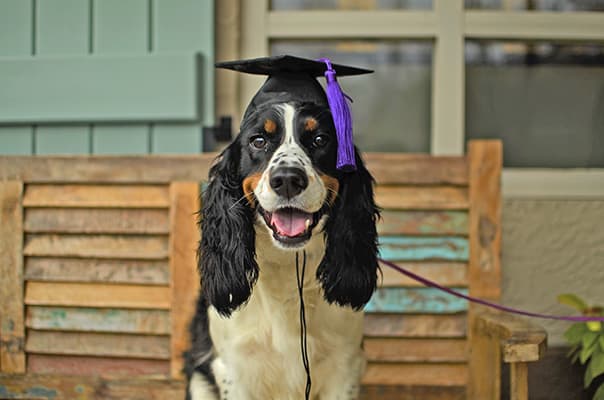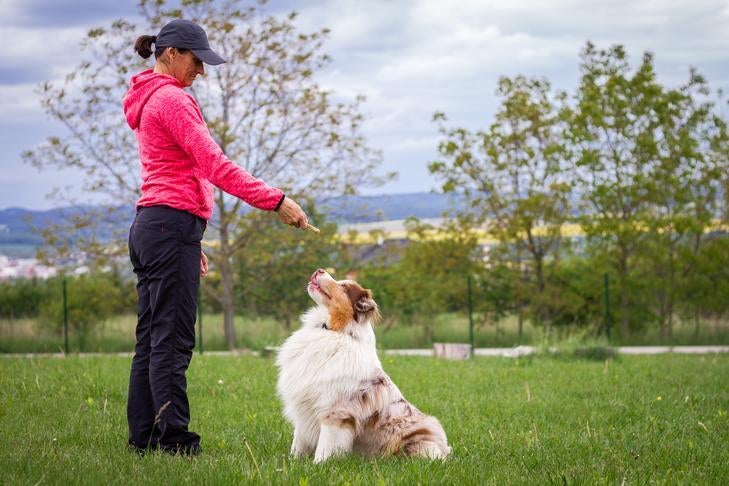How Dog Training Can Improve Your Pet's Quality of Life and Behavior
How Dog Training Can Improve Your Pet's Quality of Life and Behavior
Blog Article
Leading Canine Educating Techniques Every Owner Must Know

Positive Support Strategies
Making use of positive support strategies is crucial for reliable canine training, as it promotes a trusting bond in between the instructor and the pet dog. This technique concentrates on rewarding preferable habits instead of penalizing unfavorable ones, creating a setting favorable to finding out. Benefits can include deals with, praise, or playtime, which inspire pet dogs to repeat the actions that make them these rewards.

Furthermore, this technique enhances the canine's interest for training sessions. They are much more involved and receptive when dogs associate training with positive experiences. Dog training. Beyond instant actions adjustment, favorable support urges a collaborative connection in between the pet dog and trainer, minimizing anxiousness and fear
To maximize effectiveness, it is important to provide incentives without delay, making certain the dog connects the behavior with the reinforcement. In essence, favorable support strategies not just produce better-trained pets yet additionally advertise an unified collaboration in between pet dog and owner.
Clicker Training Method
The clicker training method is an extremely efficient method that builds on the principles of positive reinforcement by adding an unique noise to mark preferred habits. This technique uses a little portable device that produces a clicking noise, enabling trainers to connect with their dogs in a clear and prompt fashion. When a pet executes an actions that the proprietor wants to motivate, the remote control is triggered, complied with by a reward, generally in the form of treats or appreciation.
The trick to successful clicker training hinges on uniformity and timing. It is vital to click at the precise moment the wanted actions happens, guaranteeing that the canine associates the audio with the action and the subsequent incentive. This technique not only boosts interaction but also cultivates a stronger bond between the proprietor and the canine, as it urges involvement and communication during training sessions.
Remote control training can be related to a variety of commands and actions, from standard obedience to a lot more complex methods. Its flexibility and effectiveness make it a popular technique amongst professional instructors and animal proprietors alike, leading the way for a receptive and well-trained canine buddy.
Leash Training Fundamentals
Effective chain training is important for making certain a safe and delightful walking experience for both pet dogs and their proprietors. Dog training. Leash training must start early and be come close to with patience and uniformity. Start by selecting an ideal leash and collar or harness. A flat collar might function for some canines, while others might take advantage of a harness that reduces pulling.
Present your pet to the chain progressively, allowing them to explore it in a comfortable environment. This involves gratifying your canine for strolling next to you instead than pulling ahead.
If your pet dog begins to pull, quit strolling quickly. In addition, practice different strolling environments to help your pet dog adjust to interruptions.
Routine practice will solidify your pet dog's understanding of leash decorum. Keep in mind that leash training is a continuous process; perseverance and consistency will certainly produce the most effective results, fostering a favorable experience for both you and your canine buddy.
Socializing Methods
Socialization is a critical element of canine training that need Homepage to ideally begin during puppyhood however can be beneficial at any age. Reliable socializing assists canines create confidence and lowers the probability of behavioral issues. To apply successful socializing strategies, reveal your dog to a selection of environments, people, and various other animals.
Beginning with regulated settings, such as pup classes or arranged playgroups, where young dogs can engage safely. Progressively introduce your pet dog to brand-new experiences, including various noises, surface areas, and tasks. Ensure these encounters are positive and rewarding to establish a feeling of safety.
For grown-up canines or those lacking exposure, begin with low-stress scenarios. Short, favorable interactions with friendly people and calm pets can create positive associations. Use deals with and appreciation to strengthen preferable habits during these experiences.

Uniformity and Persistence
Acknowledging the significance of consistency and perseverance in pet training is crucial for attaining enduring results. Educating a pet is a progressive process that requires an organized technique and unwavering commitment from the owner. Each command or behavior have to be websites enhanced continually to aid the pet comprehend what is expected of them. Irregular training can result special info in confusion, making it tough for the pet dog to grasp commands or behaviors, eventually hindering development.
Pets, like human beings, find out at their very own rate. This cultivates a relying on partnership in between the pet and proprietor, motivating a much more ready and enthusiastic learner.
To cultivate consistency and patience, develop a normal training regular, make use of the very same commands, and make certain that all household participants use the very same training concepts - Dog training. By doing so, you produce a steady atmosphere favorable to discovering, enabling your canine to develop and thrive into a well-behaved friend
Verdict
Finally, efficient canine training techniques, such as positive support, remote control training, and appropriate leash training, are vital for fostering a healthy and balanced owner-dog relationship. Additionally, implementing socialization strategies and keeping uniformity and persistence throughout the training process adds significantly to a pet's general well-being. By incorporating these techniques, dog proprietors can assist in the development of well-adjusted, loyal family pets, ultimately boosting the lifestyle for both the owner and the pet.
Among the most popular approaches are favorable reinforcement, remote control training, and chain training, each offering special benefits that add to a mannerly dog. As we explore these basic strategies, it becomes obvious that grasping their nuances can significantly influence the training experience and the dog's general actions.Using favorable reinforcement methods is essential for efficient pet training, as it fosters a relying on bond in between the dog and the fitness instructor.In verdict, effective canine training strategies, such as favorable reinforcement, clicker training, and appropriate chain training, are necessary for fostering a healthy owner-dog relationship. By integrating these methods, pet dog proprietors can facilitate the development of well-adjusted, obedient family pets, inevitably enhancing the quality of life for both the proprietor and the dog.
Report this page